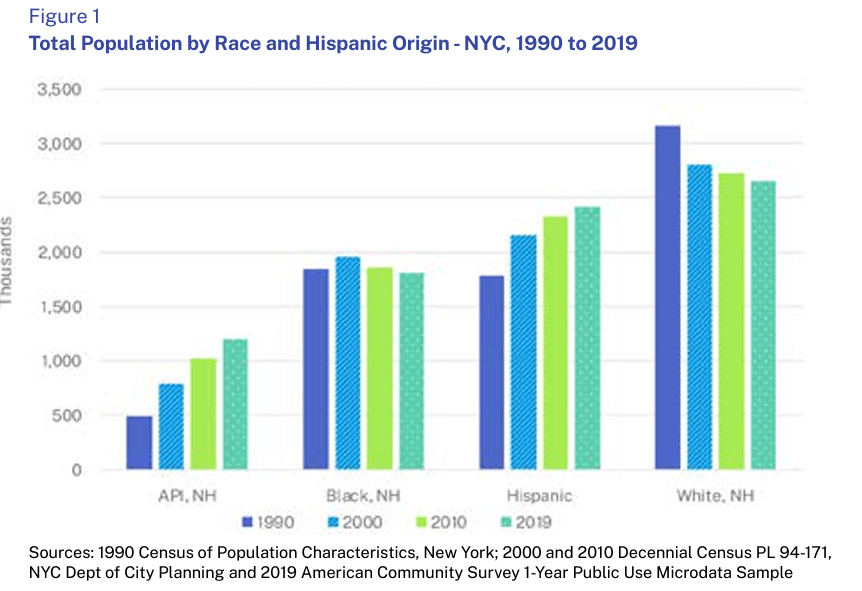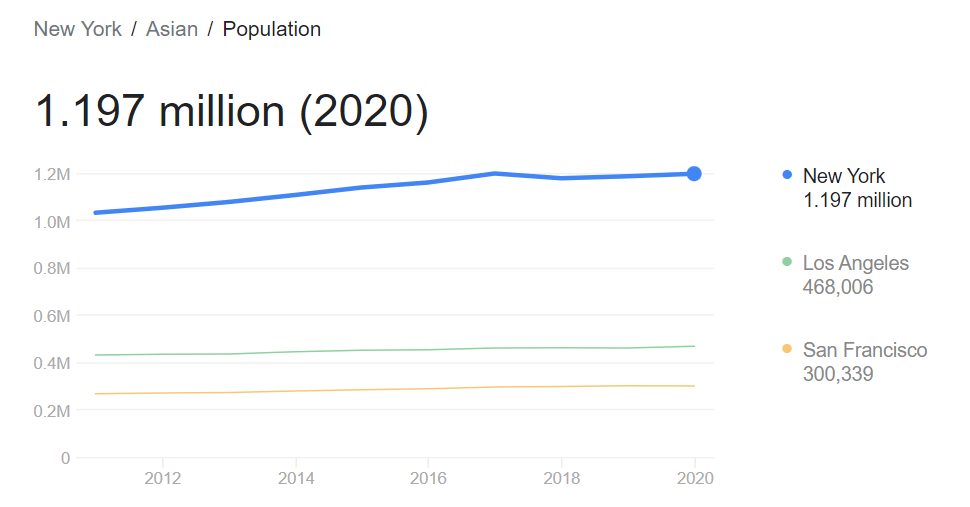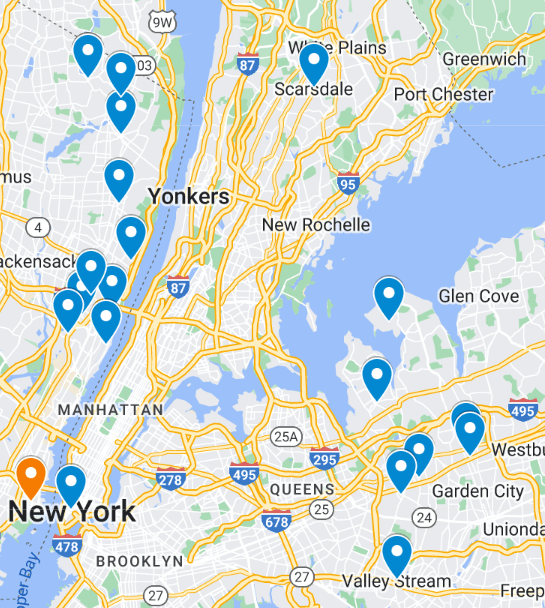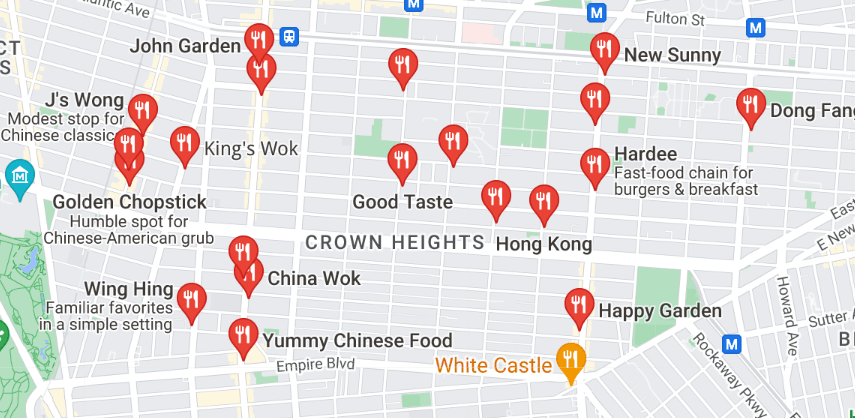New York Asia City. Project leader: Krishnendu Ray. People from all over Asia (including people classified as Middle Eastern) represent the fastest growing immigrant population in the city, accounting for over half the city’s growth, since 2010, in all five boroughs. They typically maintain strong Asian connections; many have been here for generations; and mobile Asian students and investors add further complexity to Asian New York, which is increasingly complex, global, mobile, and Afro-Hispanic-Asian. The mobility and mingling of Asian creativity in all kinds of New York neighborhoods is the subject of this project, which includes on-the-ground field research by students. In one NYU VIP course, students produced digital content for NEW YORK IMMIGRANT CITY website, which provides a model for the kind of online resource platform that we might develop on Asian New York.
HERE ARE SOME RESOURCES
“Chinatown: Politics, Praxis, and Possibilities,” Diane Wong, Rutgers
Jenny Cheng, The Family in the Chinese American Restaurant Project.
For a general resource, see City of NY Neighborhood Map; Wikipedia Asian Americans in NYC; NYC neighborhoods StoryMap; NYU Furman Center, Neighborhood Data; The Immigration and Ethnic History Society. A relevant book by Lauren Hilgers: Patriot Number One: American Dreams in Chinatown (New York: Crown Publishing Group) New York Immigrant City Factsheet Course Webpage: New York Immigrant City. DETAILED INTERACTIVE MAPS: RACE, ETHNICITY, AND DIVERSITY IN NYC CUNY has a number of NYC/Immigration sites: e.g. “A People’s History of New York City, by Samuel Finesurrey. A student project: People of New York. Movement/Spread of Chinatowns.
Furman Center Neighborhood Profiles Demographics . Furman Core Data Downloads from: US Census Neighborhood Community Survey.
INTERACTIVE MAP: Race, Diversity, and Ethnicity in New York, NY
Zeemap of Chinatowns by Nastassja Rebecca Victoria Gerlich
Aazah Mirza, the circulation of some South Asian artists (restricted map under development)
Sarah Sun Map: “Distribution of Chinese Restaurants.” The data comes from NYC Open Data: DOHMH New York City Restaurant Inspection Results.
Good Wikipedia Sites: New York City ethnic enclaves. and Asian Americans in New York City (New York City itself contains by far the highest ethnic Chinese population of any individual city outside Asia, estimated at 628,763 as of 2017) — Nine Chinatowns. NYC MICRO NEIGHBORHOODS: ASIAN FOOD AND CULTURE IN FLUSHING, QUEENS

 LONG ISLAND CITY IS A HOTSPOT: Nicole Hong, “Inside the N.Y.C. Neighborhood With the Fastest Growing Asian Population,” New York Times, Oct. 18, 2021. Updated Oct. 19, 2021 NEW YORK CITY is also Hub and transit point for migration elsewhere, e.g. New York State, where Asian populations are growing faster in many other cities. REF: Linying He, “State of Change: Asian Populations Transform New York.”
LONG ISLAND CITY IS A HOTSPOT: Nicole Hong, “Inside the N.Y.C. Neighborhood With the Fastest Growing Asian Population,” New York Times, Oct. 18, 2021. Updated Oct. 19, 2021 NEW YORK CITY is also Hub and transit point for migration elsewhere, e.g. New York State, where Asian populations are growing faster in many other cities. REF: Linying He, “State of Change: Asian Populations Transform New York.”
BUFFALO IS A HOTSPOT Caitlin Dewey, “Influx of newcomers brings ‘so much energy’ to Buffalo neighborhoods others once fled,” Buffalo News, Aug 29, 2021 Updated Dec 16, 2021.
- In addition to Bangladeshis, who frequently move to Buffalo after initially settling in New York, Broadway Fillmore has seen a sharp uptick in residents of Burmese and Somalian descent.
- The neighborhood is still majority-Black, with 6,200 Black residents.Today, Broadway Fillmore boasts at least half a dozen full-service grocery stores selling halal meats and imported produce. New shops offer kaftans, hijabs and international calling cards a stone’s throw away from older businesses selling pierogies and Black beauty products.
Here are the cities in New York and New Jersey with the largest PERCENTAGE Asian population in 2022. (pinned in Blue on map below) New Hyde Park, Great Neck Plaza, Ithaca, Scarsdale, Manorhaven, Valley Stream, Williston Park, New York City, Floral Park, Mineola, Palisades Park, Fort Lee, Edgewater, Leonia, Englewood Cliffs, Closter, Ridgefield, Tenafly, Norwood, Old Tappan  Blue pins point to high Asian population percentage cities. The orange pin is to the highest Indian concentration in New Jersey. The RED pins on THIS GOOGLE MAP are to high Asian concentration neighborhoods in New York City.
Blue pins point to high Asian population percentage cities. The orange pin is to the highest Indian concentration in New Jersey. The RED pins on THIS GOOGLE MAP are to high Asian concentration neighborhoods in New York City.

The New York University (NYU) Department of History Oral History Class Collection contains over 180 sound and video interviews conducted by graduate students from the NYU Department of History in 1984, between 1991 and 1995, in 1999, and by volunteers from the Workmen’s Circle in Manhattan, New York in 1993. The majority of the narrators lived in the Lower East Side (LES) neighborhood of Manhattan, New York. … The narrators reflect the changing ethnic composition of different neighborhoods in New York City, and include Jewish immigrants from Eastern Europe; immigrants from Africa, Asia, the Caribbean, and Central America; and migrants from the southern United States and Puerto Rico. Topics covered by the interviews include life in tenements in the LES, life in public and cooperative housing in the LES, family life, ethnic identities, intercultural and interracial relations in New York City, education, religion, paid and unpaid work, immigration and migration experiences, religious and social activities in East Harlem, Asian American activism, socialist and anarchist organizations, political activism, anti-war movements, community gardens in New York City, and experiences of women in higher education through the 1970s and 1990s. In addition to the interviews, the collection includes transcripts (full and partial) of interviews, notes on and indexes of interviews, field notes taken by interviewers, and preliminary questionnaires completed by narrators. Some files include articles and ephemera created by the narrators or are related to the topics they discussed in the interviews.
CHINESE FOOD IN CROWN HEIGHTS